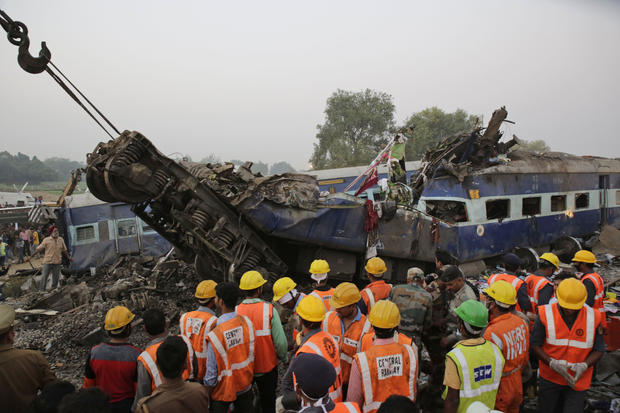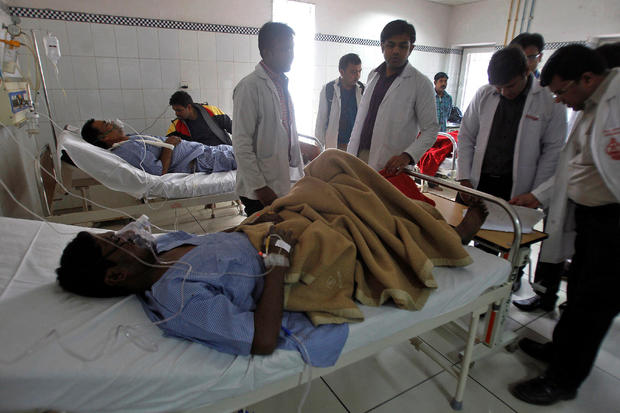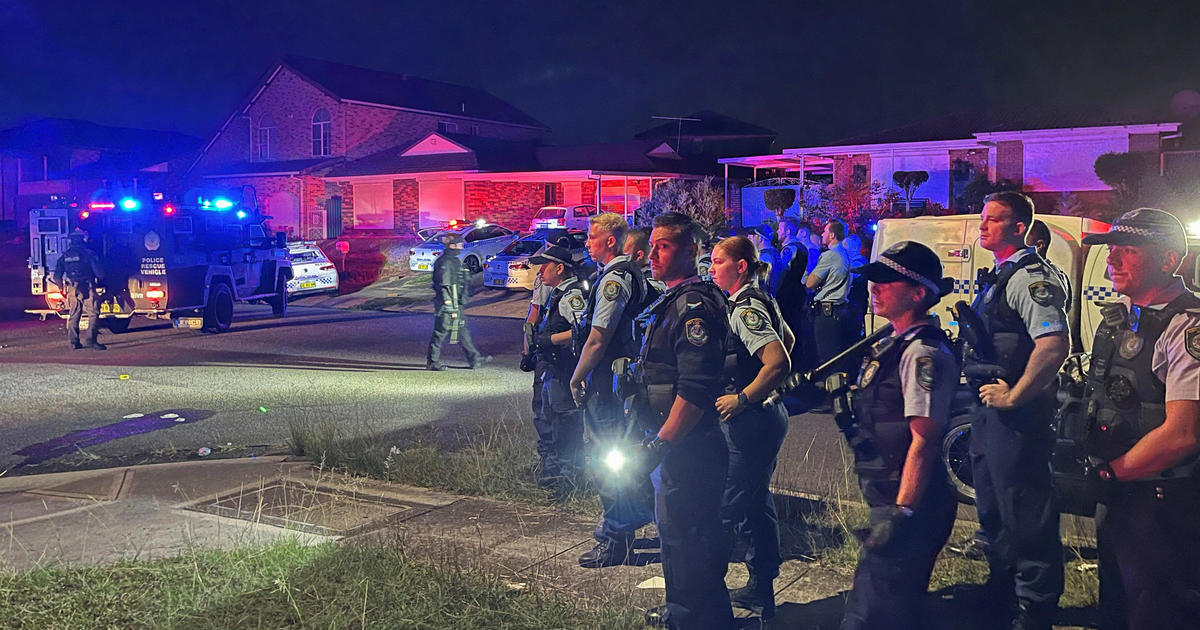India train derailment death toll nears 150
PUKHRAYAN, India -- The death toll from India’s worst train accident in years rose to 145 on Monday, as rescuers used cranes to lift the twisted metal wreckage to check for more bodies underneath.
The passenger train was about midway through a 27-hour journey between the cities of Indore and Patna when it slid off the tracks at 3:10 a.m. Sunday. The impact was so strong that one of the coaches landed atop another, crushing the one below. Passengers were jolted awake and said they heard the crash as they were flung from their beds.
“There was a loud sound like an earthquake. I fell from my berth and a lot of luggage fell over me,” Ramchandra Tewari, who suffered a head injury, said from his hospital bed in the industrial city of Kanpur. “I thought I was dead, and then I passed out.”
Rescue workers, soldiers and members of India’s disaster management force worked through the night to pull out people trapped amid the twisted metal and overturned coaches near Pukhrayan, a village outside Kanpur about 250 miles southeast of New Delhi.
They used cutting torches to pry open cars and cranes to lift coaches from the tracks, moving carefully to prevent any cars from toppling over and injuring those trapped inside.
By Monday morning, they had searched the last of the 14 wrecked cars, but had yet to lift the coach from the tracks to see if more bodies had been trapped beneath.
“The search operation at the site is almost over. I’m saying ‘almost,’ because they are trying to lift the coach with the help of cranes, and check if there are any bodies,” Indian Railways spokesman Anil Saxena said. “We can be sure only after the coach is lifted up and removed from the track.”
The accident killed at least 145, of which 116 had been identified, according to Dr. Aneeta Singh, the chief medical officer of Kanpur Dehat district where Pukhrayan village is located.
Roughly 226 people were hurt, including 76 with serious injuries, according to local police Inspector General Zaki Ahmad. Medical teams provided first aid near the site, while those in more serious condition were moved to hospitals in Kanpur.
Anxious relatives searched for their family members among the injured and the dead at hospitals in Kanpur.
Rail authorities ordered an investigation into what caused the derailment. Some told local media they suspected faulty tracks.
“We haven’t seen an incident like this in Indian Railways for a long time,” said the state’s railways minister, Rajen Gohain, according to the Indian Express newspaper. “There must be a fault in the track as 14 bogeys have derailed, and this happened despite regular checking of the tracks.”
The Patna-Indore Express Train derailing was one of India’s deadliest train accidents in at least five years. Accidents are relatively common on India’s sprawling rail network, which is the world’s third largest but lacks modern signaling and communication systems. Most accidents are blamed on poor maintenance, outdated equipment and human error.
According to an Indian government report in 2012, about 15,000 people are killed every year in train accidents. The worst occurred in 1981, when a passenger train fell into the Baghmati River in northern India, killing nearly 800 people.
Prime Minister Narendra Modi - who tweeted that he was “anguished beyond words” by Sunday’s accident - had pledged last year to invest $137 billion over the next five years to modernize India’s railway network, which is used by about 23 million passengers a day.





